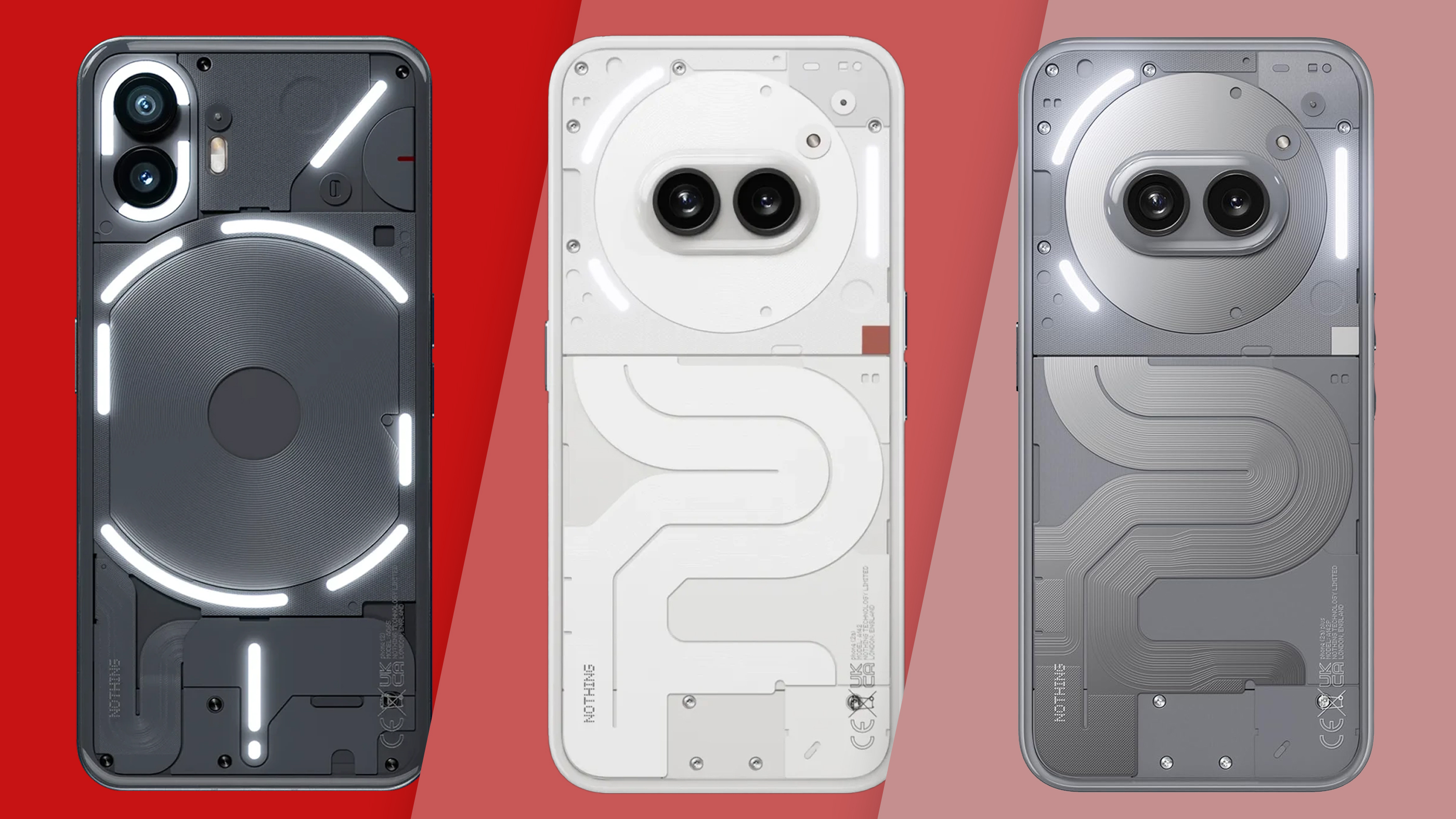
It still feels like we're in the infancy of trendy London-based brand Nothing's smartphone journey, but despite only launching two phones in two years, that pace has picked up for 2024, with three subsequent additions, and the promise of another flagship, the Nothing Phone 3, sometime next year.
The current flagship entry in Nothing's portfolio is the Nothing Phone 2, which was unveiled in the midst of 2023. For 2024, the company's smartphones have placed a much greater focus on affordability, with the more modestly-specced (and priced) Nothing Phone 2a arriving in March, the budget CMF Phone 1 in July, and the refreshed Nothing Phone 2a Plus later that same month.
While the CMF Phone 1 best represents the Nothing sub-brand, the Phone 2, 2a, and 2a Plus are the freshest faces to tout the Nothing brand directly, and all share plenty of design traits and features as a result.
If you're in the market for a head-turning smartphone, chances are a Nothing Phone would make a great fit – it's just a matter of knowing whether the older and more powerful Phone 2 is the one to go for, or if the mid-range Phone 2a or 2a Plus have everything you need.
To help you find out, here's a three-way comparison of the three best phones from Nothing in 2024.
Nothing Phone 2 vs Nothing Phone 2a vs Nothing Phone 2a Plus: Specs comparison
Nothing Phone 2 vs Nothing Phone 2a vs Nothing Phone 2a Plus: Price and availability
The main factor to consider here is timing. Although the Phone 2 is a more premium flagship offering, it debuted back in July 2023, meaning its original asking price has had more than a year (at the time of writing) to fall. Here's the original retail pricing for all three phones, for context and comparison:
Using 256GB of storage as a through line (as all three devices are available in that capacity), the launch price of the Phone 2 initially came in at double that of the Phone 2a and 75% more than the asking price of the Phone 2a Plus. Factor in time-since-launch, however, and things look a little different today.
The Phone 2a Plus is the most recent entry of the three, having only gone on sale in September 2024; meaning it still costs £399 (using Nothing's home market pricing as a reference). Despite only having been out a few months, the asking price for both storage variants of the Nothing Phone 2a has already fallen by £20 a piece. And as for the Nothing Phone 2, nowadays it's between £100 and £130 cheaper than it was at launch, depending on the amount of storage you're after.
When comparing prices on 256GB of storage, this makes the Nothing Phone 2 60% more expensive than the 2a and 30% pricier than the 2a Plus in mid-2024; a notable reduction, compared to launch pricing.
There's also availability to consider, with all three phones readily on sale across the UK, Europe, and Australia. You'll have a harder time picking up either version of the Phone 2a in the US, however.
Unlike the Phone 2 – which you can buy just like any other product, direct from Nothing's website – Nothing is only distributing the Phone 2a and 2a Plus via its US Beta Program. The main caveat is that devices bought using this route are international models and thus don't hold the same breadth of carrier band support for US networks – especially CDMA-based carriers like Verizon.
Nothing Phone 2 vs Nothing Phone 2a vs Nothing Phone 2a Plus: Design
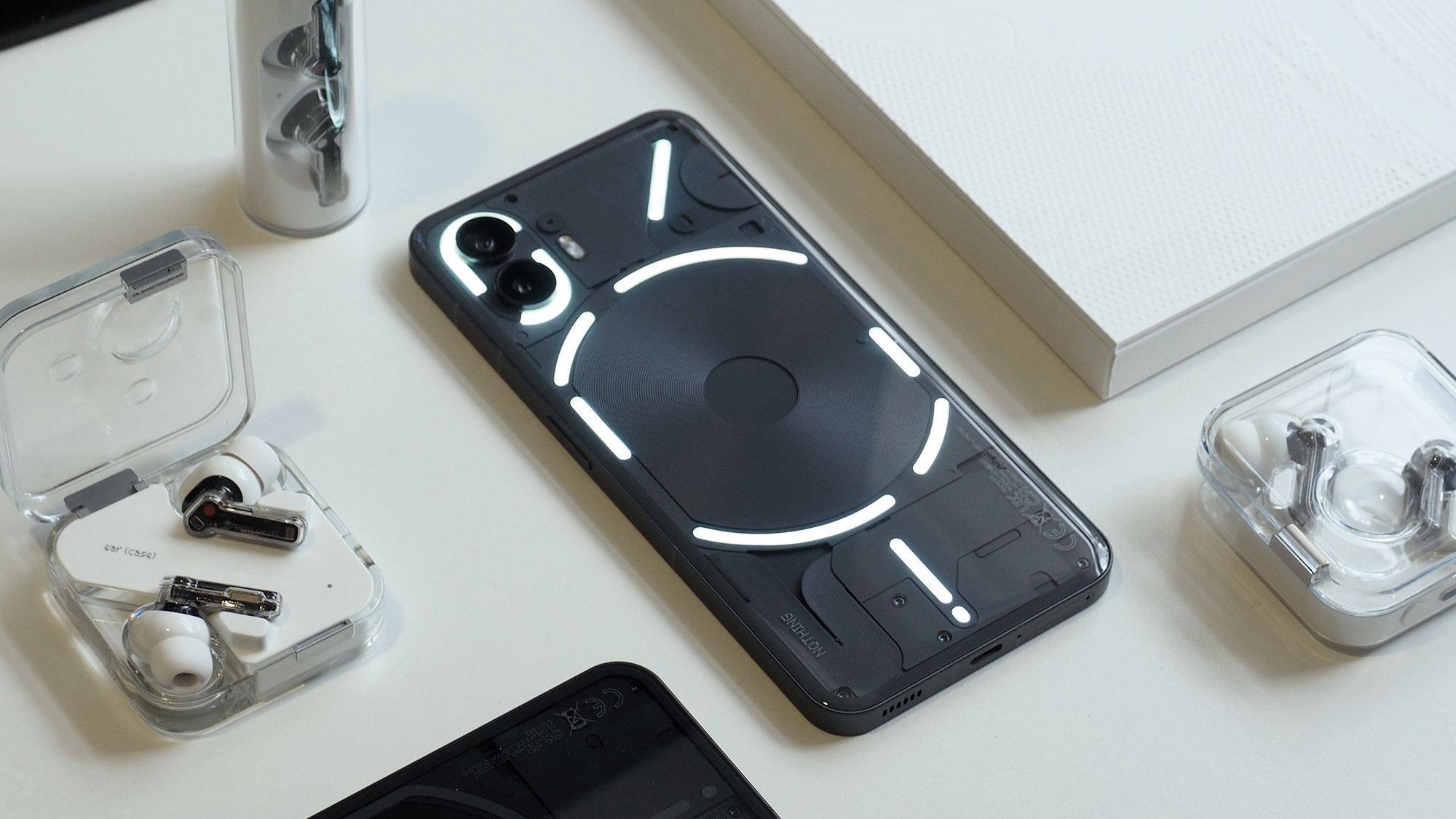
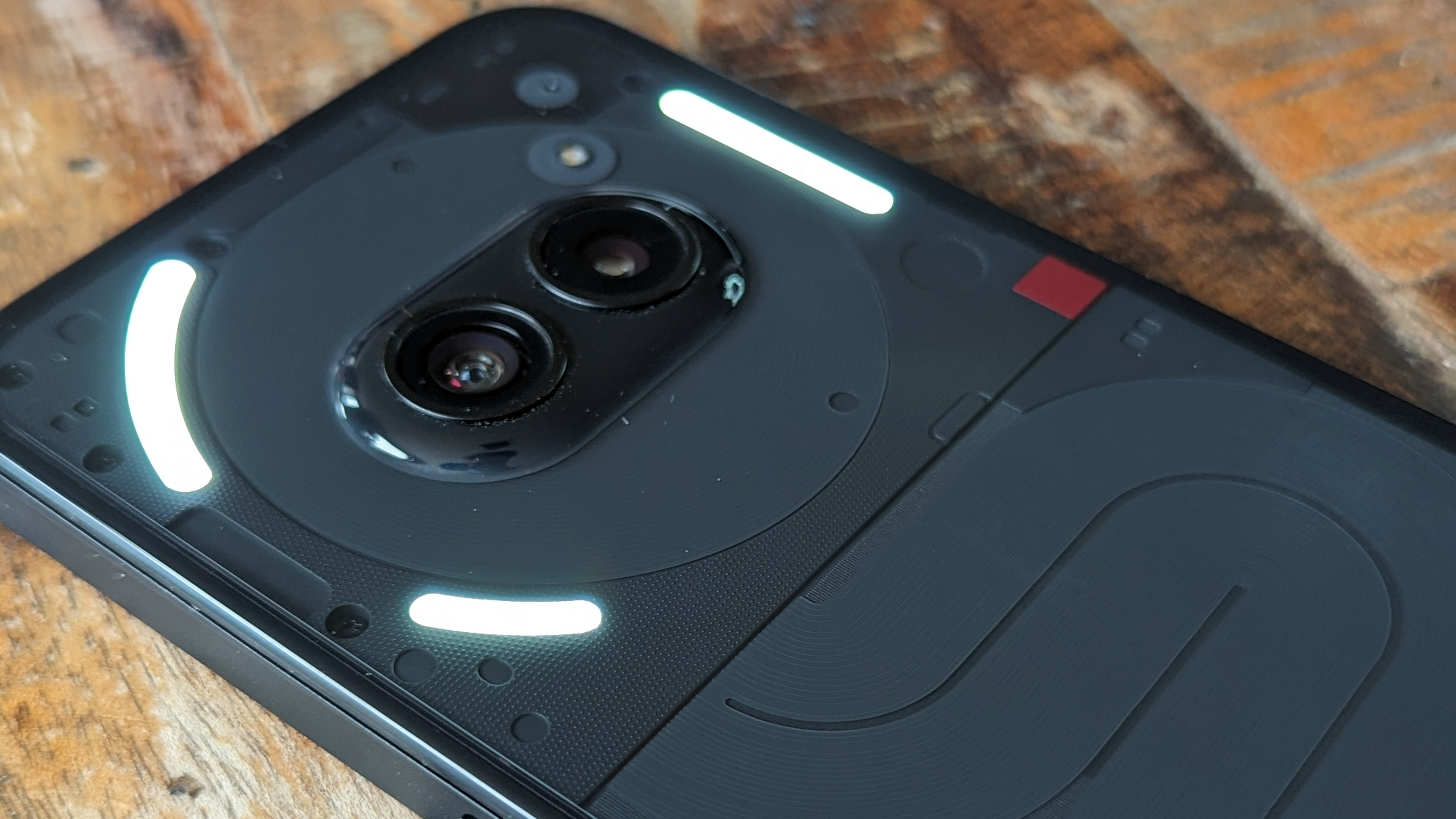
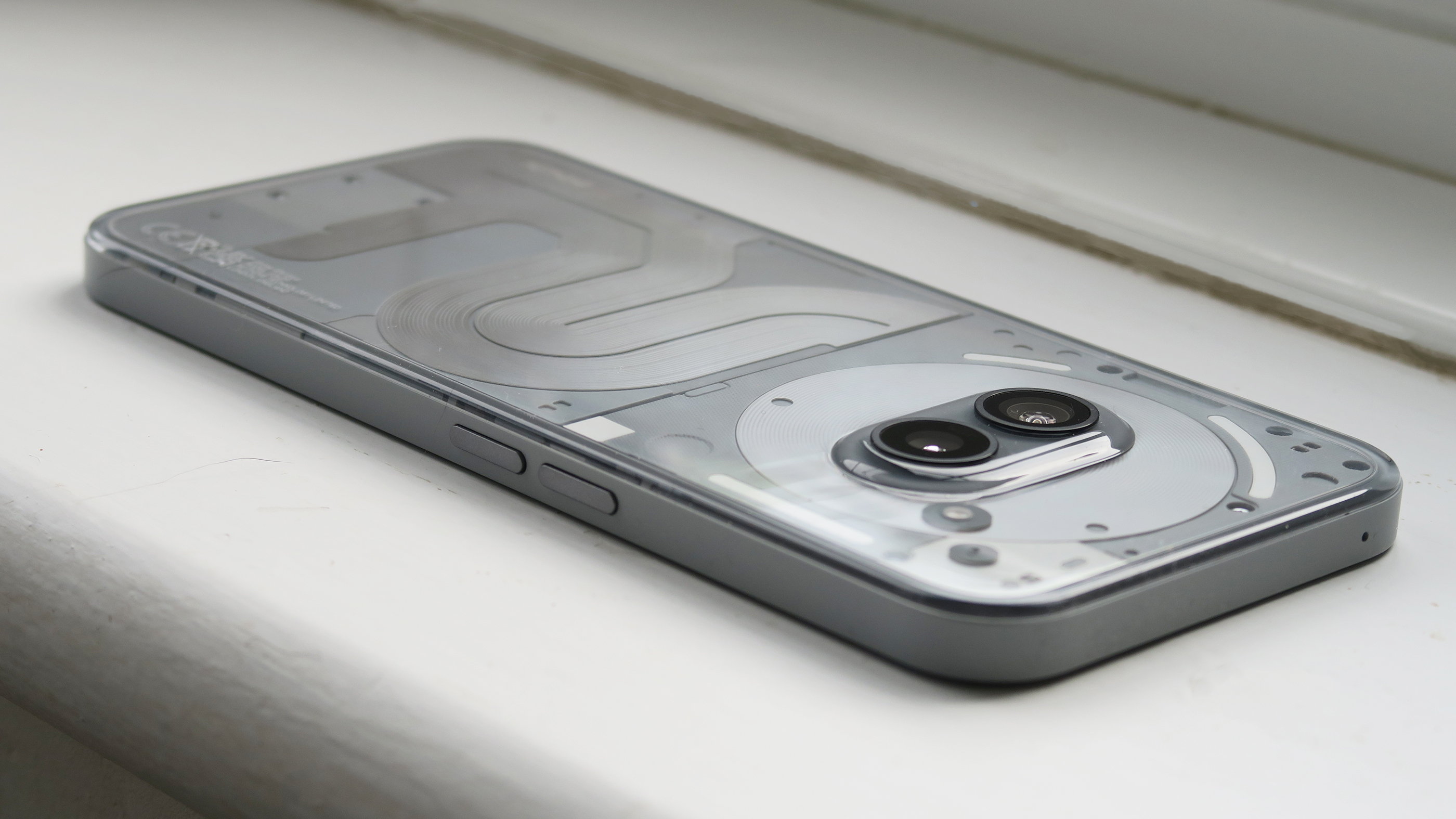
Nothing has developed an arresting design aesthetic that's all its own, something that's hard to do in today's saturated smartphone market. There are some fundamentals that you won't miss out on, regardless of which of these three Nothing Phones takes your fancy.
A transparent back is the main hallmark of any Nothing Phone, paired with visible screws and circuitry underneath, as well as the occasional pop of red, against what are otherwise (typically) monochromatic finishes. All three phones hold the same fundamentals close, with flat displays, flat edges that play host to a power key on the right and volume controls on the left, and slightly rounded backs.
There's also the Glyph Interface to consider: Nothing's iconic diffused LED array, used for everything from notifications and timers to assisting in video capture. All three devices pack a Glyph Interface set into their rear panel, but the flagship Phone 2 has the most robust of the lot; it's comprised of 33 addressable zones, across 11 light segments. Both the Phone 2a and 2a Plus are, by comparison, limited to just 26 zones across only 3 light segments.
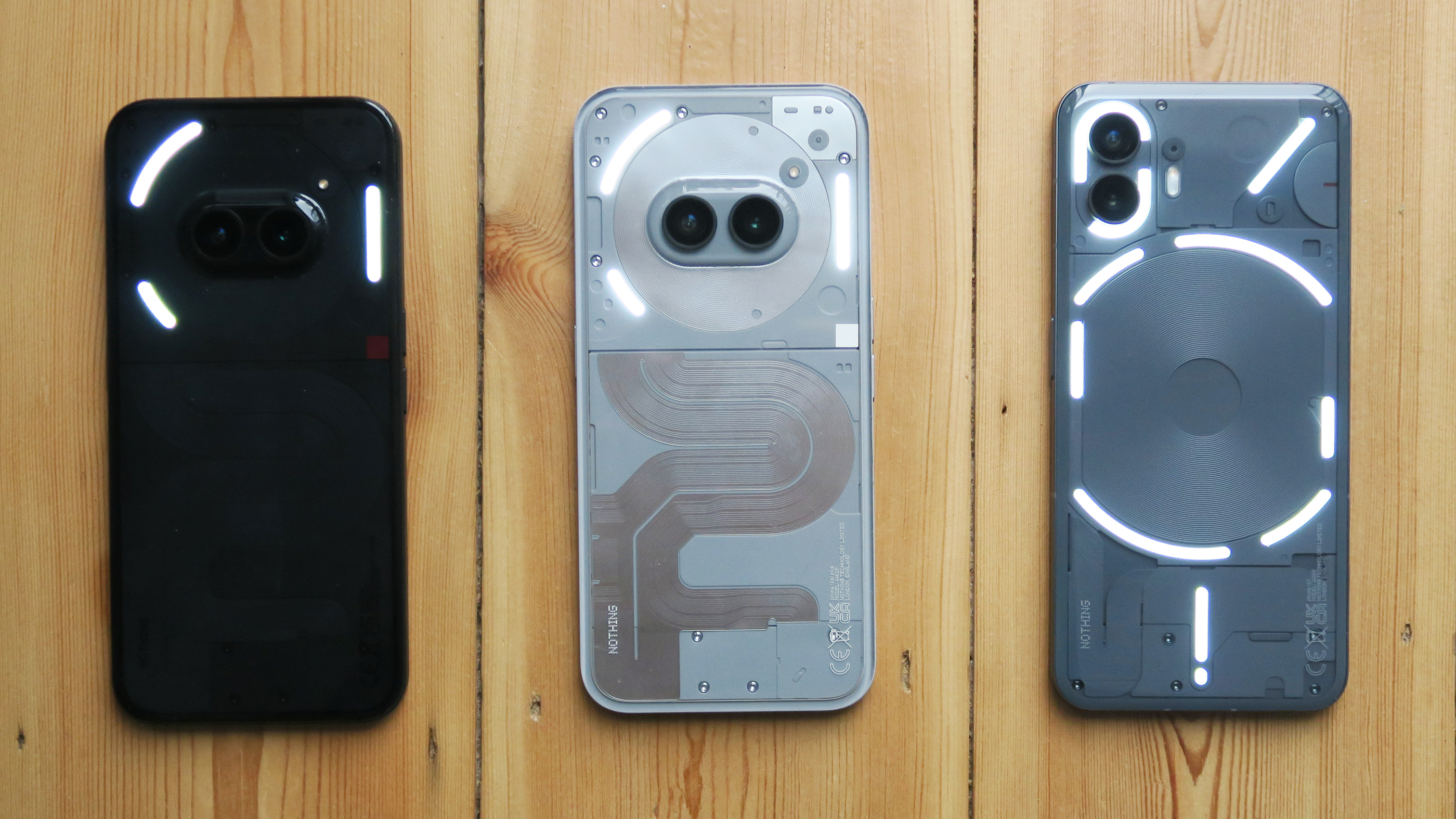
For all the visual similarities, though, it's hard to ignore the Phone 2's more premium aluminum frame and glass back, in contrast to the 2a and 2a Plus' polycarbonate build, which takes on smudges and scrapes more easily. That material change does, at least, mean the 2a and 2a Plus are lighter than the metal-clad Phone 2, at 190g, compared to 201g.
All three phones are IP54-certified against dust and water ingress, which is behind the curve of industry-standard IP68-rated protection; more of a shortcoming for the Phone 2 – considering its high-end premise – compared to the mid-range Phone 2a and 2a Plus.
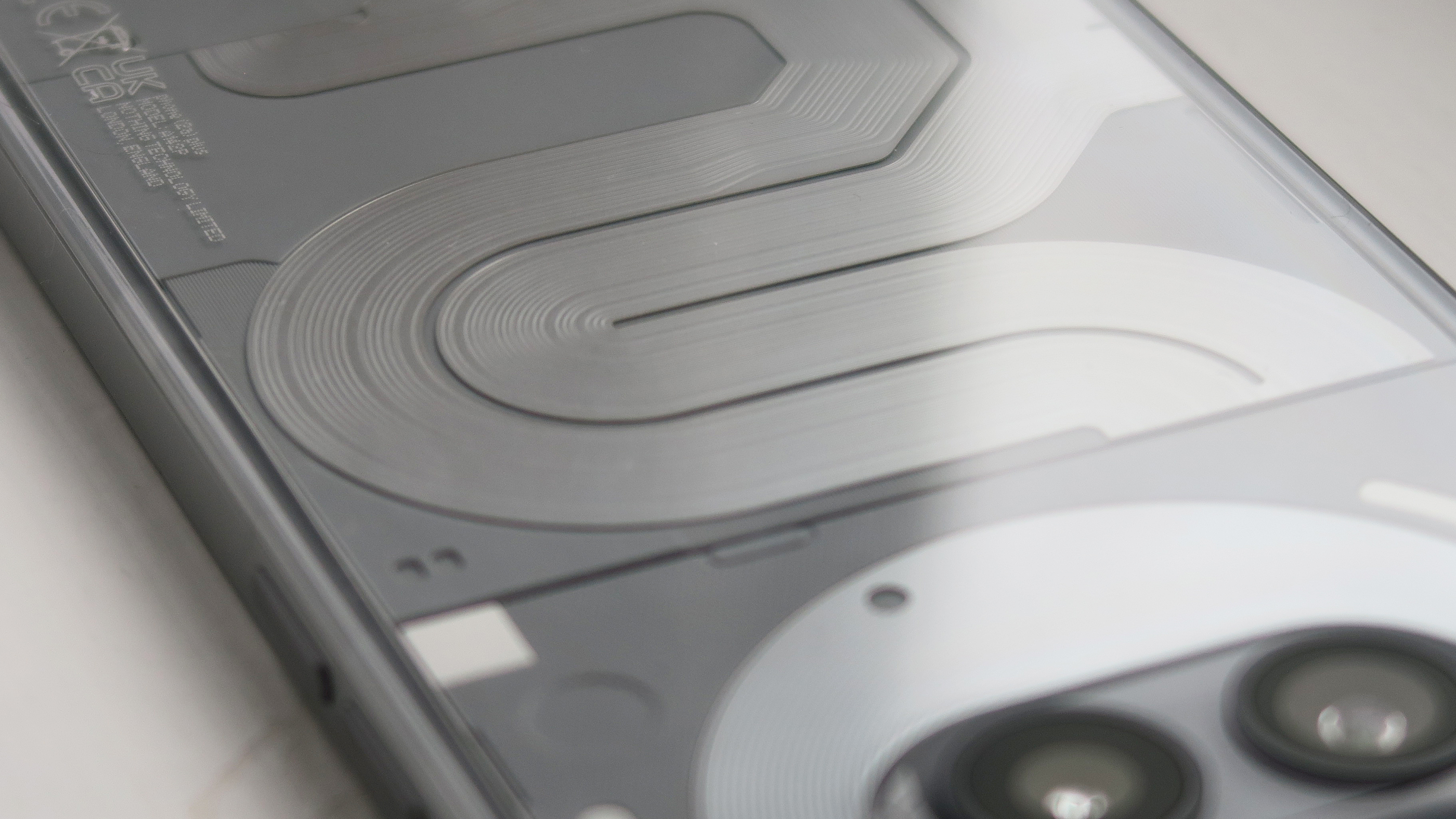
One asterisk that breaks Nothing's own conventions somewhat is the Nothing Phone 2a Special Edition, which employs far more color in its design than we're used to seeing from the brand's smartphones, even more so than the shiny circuitry unique to the Phone 2a Plus.
Nothing Phone 2 vs Nothing Phone 2a vs Nothing Phone 2a Plus: Displays
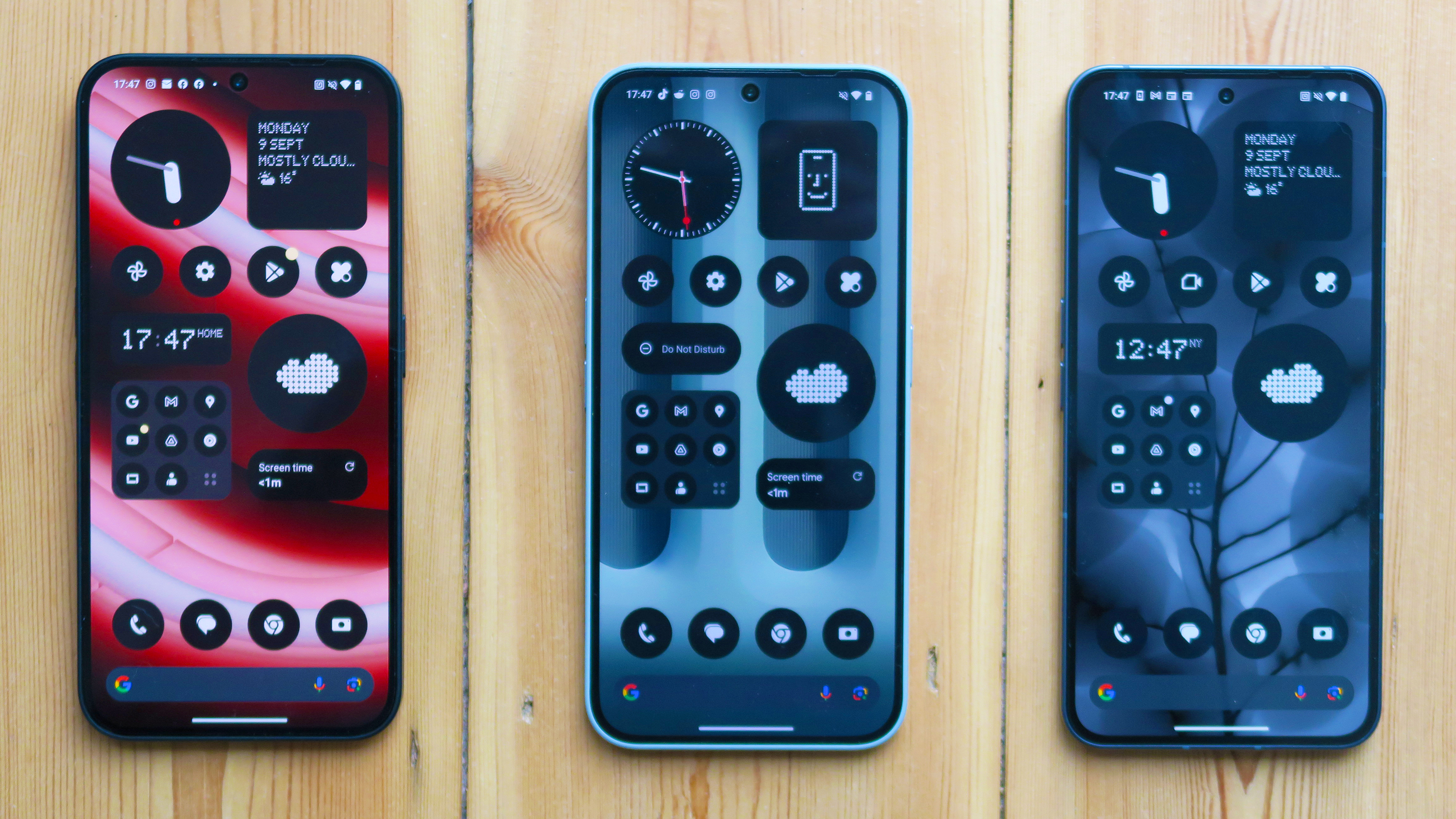
You can expect a generally similar viewing experience across all three devices, thanks to their shared use of a 6.7-inch Full HD+ 120Hz OLED panel. It's a nice size for content without making any phone feel too cumbersome in the hand, colors are vibrant without being over-saturated, and navigation is buttery smooth, thanks to that peak 120Hz refresh rate.
The 2a and 2a Plus employ the same panel as one another, while the Phone 2 ups the ante in a few areas, such as its use of LTPO tech. Its refresh rate can dynamically adjust from that 120Hz cap, all the way down to 1Hz, to save power. The 2a series' screen can shift refresh rate, too, however, its lower limit is only 30Hz and the steps between its total range are far less granular than on the Phone 2.
The full-screen maximum brightness crown technically goes to the 2a and 2a Plus, with a measure of 1,100nits (the Phone 2 outputs at up to 1,000nits), although this difference will be hard to discern in bright conditions. If you're planning on watching a lot of HDR content, the Phone 2's higher peak 1,600-nit threshold might better serve you (the 2a and 2a Plus peak at 1,300nits).
While all three phones feature in-display fingerprint sensors for authentication, the 2a/2a Plus is oddly slow in practice, against the status quo. As noted in our Nothing Phone 2a Plus review, the hope is that Nothing can speed it up with subsequent software updates.
Nothing Phone 2 vs Nothing Phone 2a vs Nothing Phone 2a Plus: Cameras
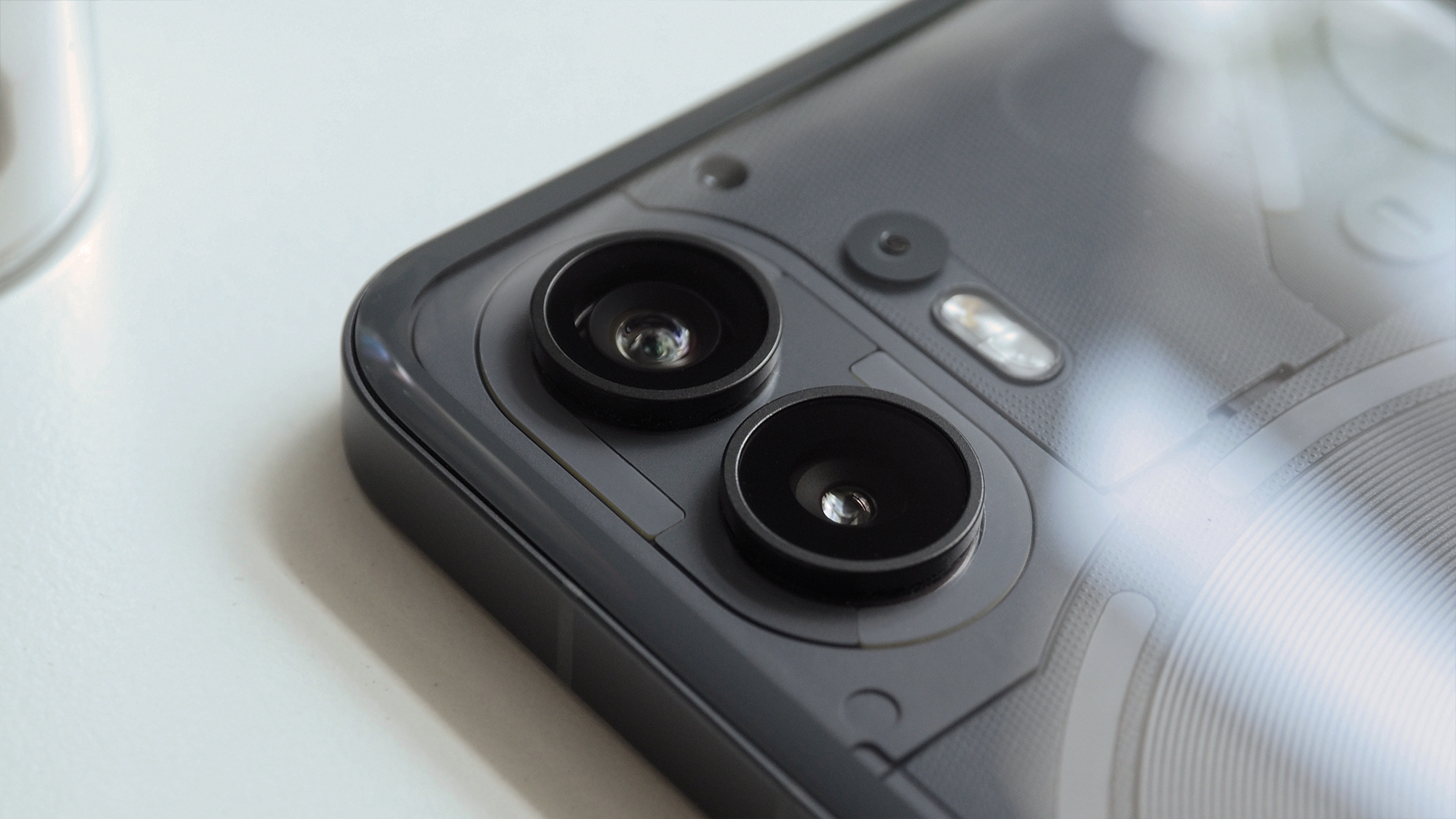
Nothing's phones aren't known for their photographic capabilities and when the Phone 2 launched, in testing we discovered that it struggled majorly with aspects like exposure control and dynamic range. Luckily, a rising tide lifts all boats, and subsequent software updates (like Nothing OS 2.5, which the Phone 2a sported at launch, and the current – at the time of writing – Nothing OS 2.6, which the 2a Plus runs out the box) have also helped improve image processing tremendously on the original Phone 2.
Whichever phone you pick, you're getting a pair of 50MP sensors on the back; a main and an ultra-wide in each case. The Phone 2 mounts them vertically, while the Phone 2a and 2a Plus go for an unorthodox lateral layout, placed down the center line of each phone's back. In both cases, each phone's Glyph Interface surrounds these camera modules and doubles as a soft key light.
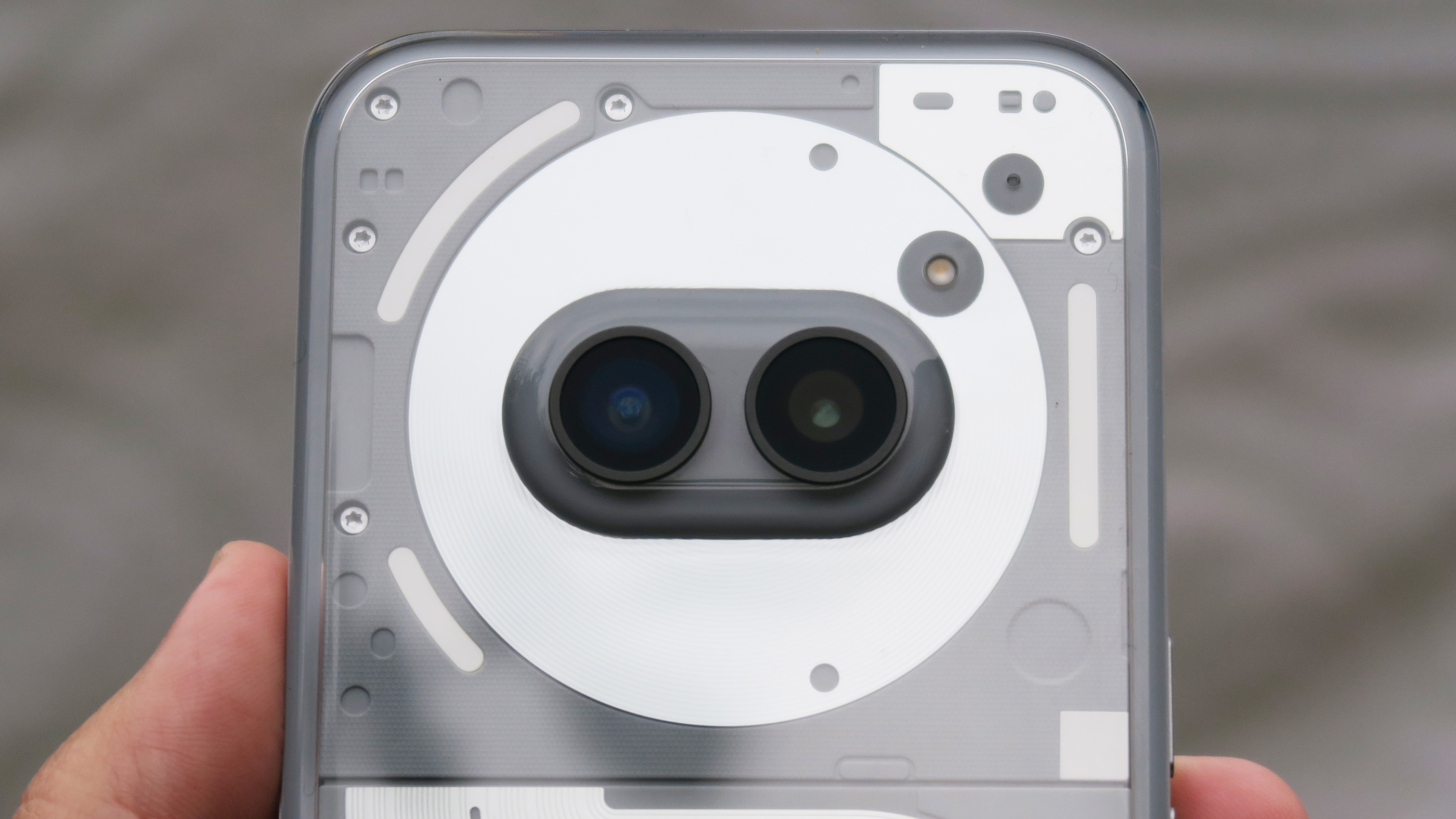
The Samsung ISOCELL JN1 serves as the 50MP ultra-wide on all three of these phones and delivers usable results, with pleasing color capture in good lighting. Low-light performance surprises on all three of these phones – however, this sensor demands that you keep things incredibly still to get a low noise and crisp image.
As for the main 50MP snappers, the Phone 2a and 2a Plus both rely on another Samsung-made sensor – the ISOCELL GN9 – while the Phone 2 opts for Sony's IMX890, which delivers better detail and lower noise, as well as a shutter that's about twice as fast.
Although the Phone 2 also trumps the other two phones with a higher video cap of 4K/60fps capture (the 2a and 2a Plus peak at 4K/30fps), it's the Plus that boasts some superior camera talents all its own.
For one, it has the highest-resolution selfie camera of any Nothing phone, ditching the 32MP resolution used by the other two and installing the same JN1 sensor used for the ultra-wide on its front. As well as higher-resolution images, improved detail capture, and 4K/30fps video recording on the front as a result, the Plus is also the only entry here to ship with a new AI Vivid Mode, which serves up real-time scene analysis and actually tells you what it's doing to improve a given scenario, based on what it 'sees' in the viewfinder.
Nothing Phone 2 vs Nothing Phone 2a vs Nothing Phone 2a Plus: Software and performance
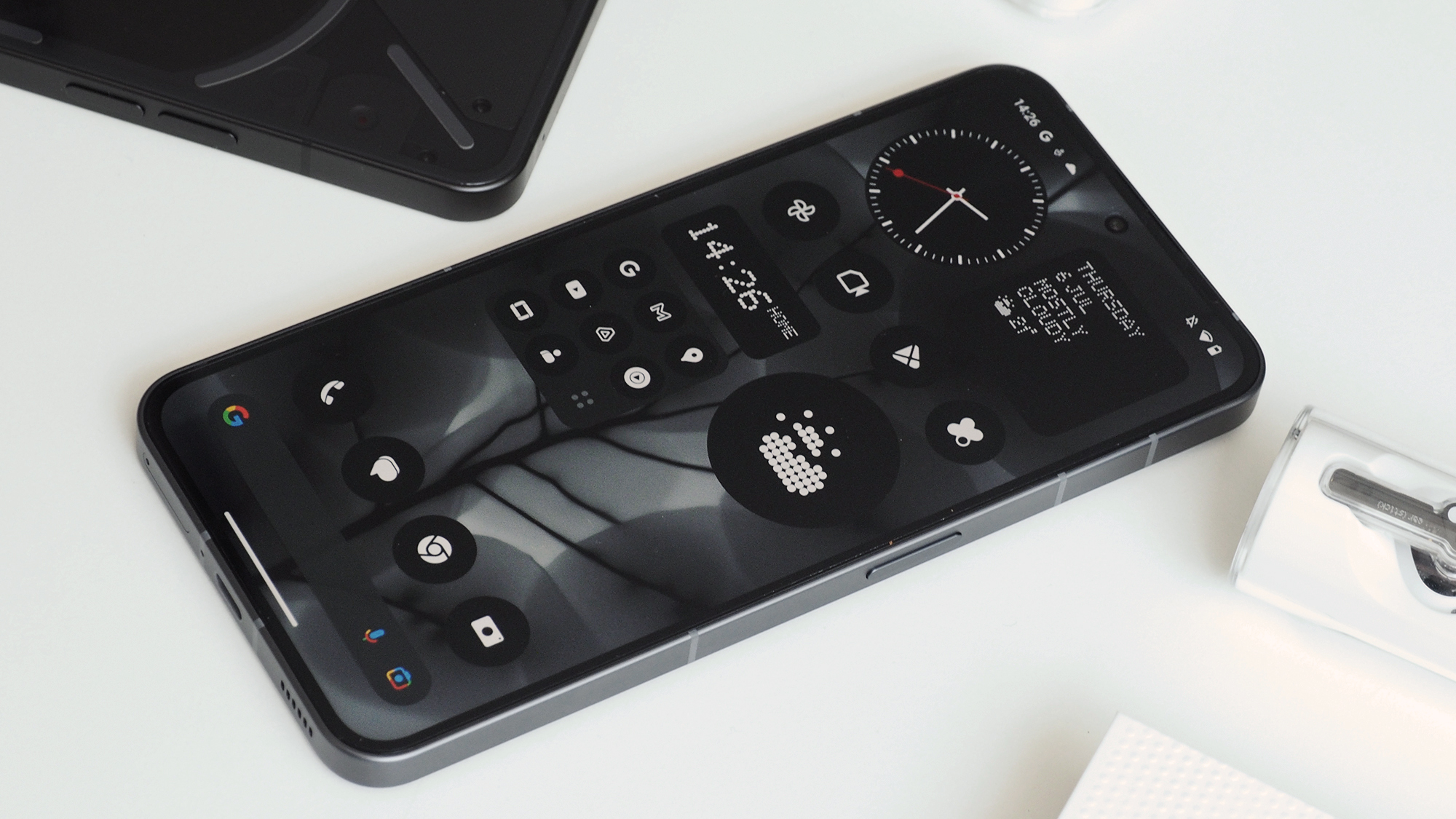
Like its hardware, Nothing has created a unique and appealing user experience on its phones. The Nothing Phone 2 launched on Android 13 and ran Nothing OS 2.0, while the newer Phone 2a and 2a Plus launched on Android 14 and ran Nothing OS 2.5 and 2.6 from the get-go, respectively.
Nothing is great at regularly pushing fix and feature updates to its devices, meaning all three phones now run on the current Android 14 and Nothing OS 2.6 (at the time of writing). However, as all three phones come with a middling commitment to three years of OS upgrades and four years of security upgrades, the newer Phone 2a and 2a Plus will receive support up until Android 17, while the more premium Phone 2 is currently slated to end its road-map a year earlier with Android 16; meaning it might miss out on features from Google and Nothing that the two mid-rangers get to enjoy down the road.


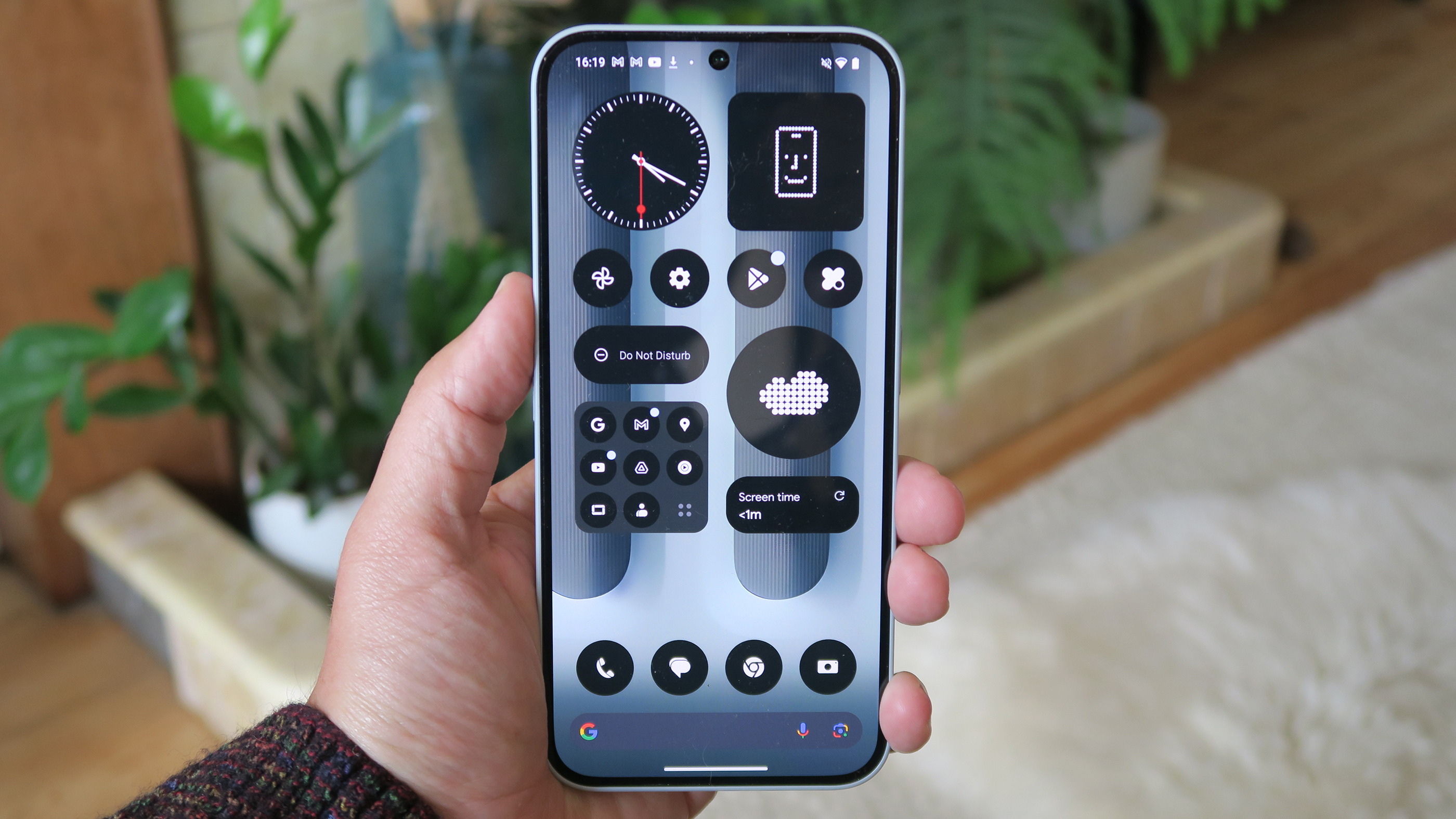
That said, right now you'll get an incredibly consistent experience across all three devices, with a snappy user experience, dressed with distinctive monochromatic app icons and dot matrix-adorned widgets. Not to mention, there are some forward-looking AI features, like dedicated widgets for ChatGPT access and Nothing's own News widget, which reads you new stories each day in the synthesized voice of company CFO Tim Holbrow.
As for performance, despite its age, the older Phone 2 remains at the top of the pile, with a Qualcomm Snapdragon 8+ Gen 1 chip at its heart that, in testing, delivered 75% superior CPU performance and 13% better graphical performance, compared to the Phone 2a's Dimensity 7200 Pro.
The newer Phone 2a Plus swaps out the 7200 Pro for a beefier Dimensity 7350 Pro SoC, but despite a promise of 10% better CPU performance and 30% better GPU ability, our internal testing resulted in scores that were just over half that.
In everyday use, you're unlikely to notice a difference unless you have all three of these devices side by side, however, the extra headroom of the Phone 2's silicon is what's responsible for faster app load times, camera shutter speed, image post-processing and gaming advantages, even if the gains aren't earth-shattering.
Nothing Phone 2 vs Nothing Phone 2a vs Nothing Phone 2a Plus: Battery
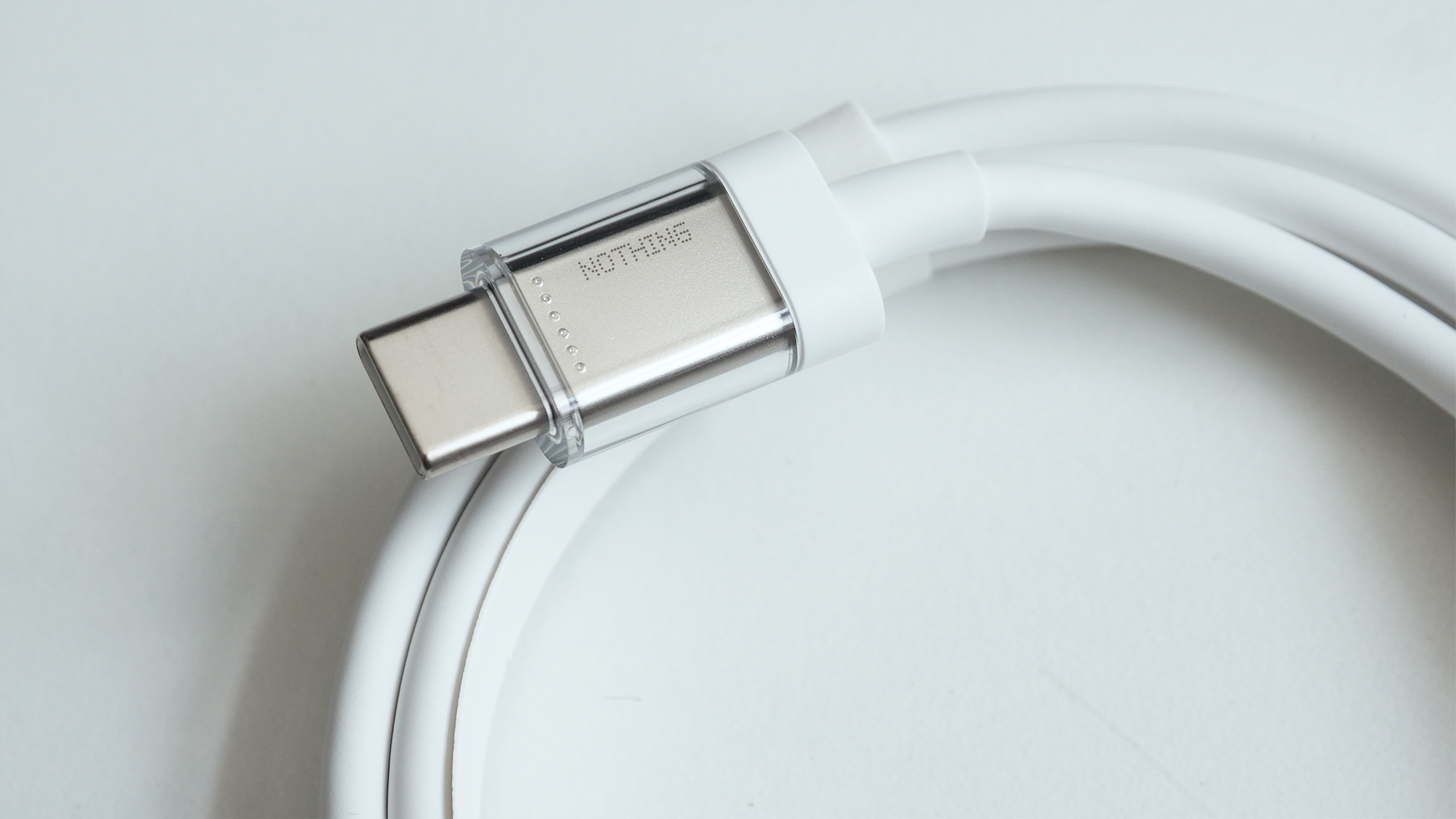
In a strange twist, the flagship Phone 2 has the smallest battery of these three phones (4,700mAh), paired with the slowest charging of the bunch, at 45W (wired). Even so, it actually puts out figures comparable to Nothing's battery champ, matching the latest Phone 2a Plus, with 7 hours of screen-on time and a full recharge in approximately 55 minutes. It also totes wireless charging, which the other two phones lose out on.
While the standard Phone 2a has a larger 5,000mAh battery compared to the Phone 2, it lasted a little less on a single charge (6 hours, 45 minutes of screen-on time) in testing, and takes just over an hour to recharge, at 45W.
The 2a Plus boasts the biggest battery and fastest charging of the trio (5,000mAh and 50W), but serves up near identical figures to the smaller-celled flagship Phone 2, in terms of screen-on and recharge times, based on peak speeds.
Nothing Phone 2 vs Nothing Phone 2a vs Nothing Phone 2a Plus: Verdict
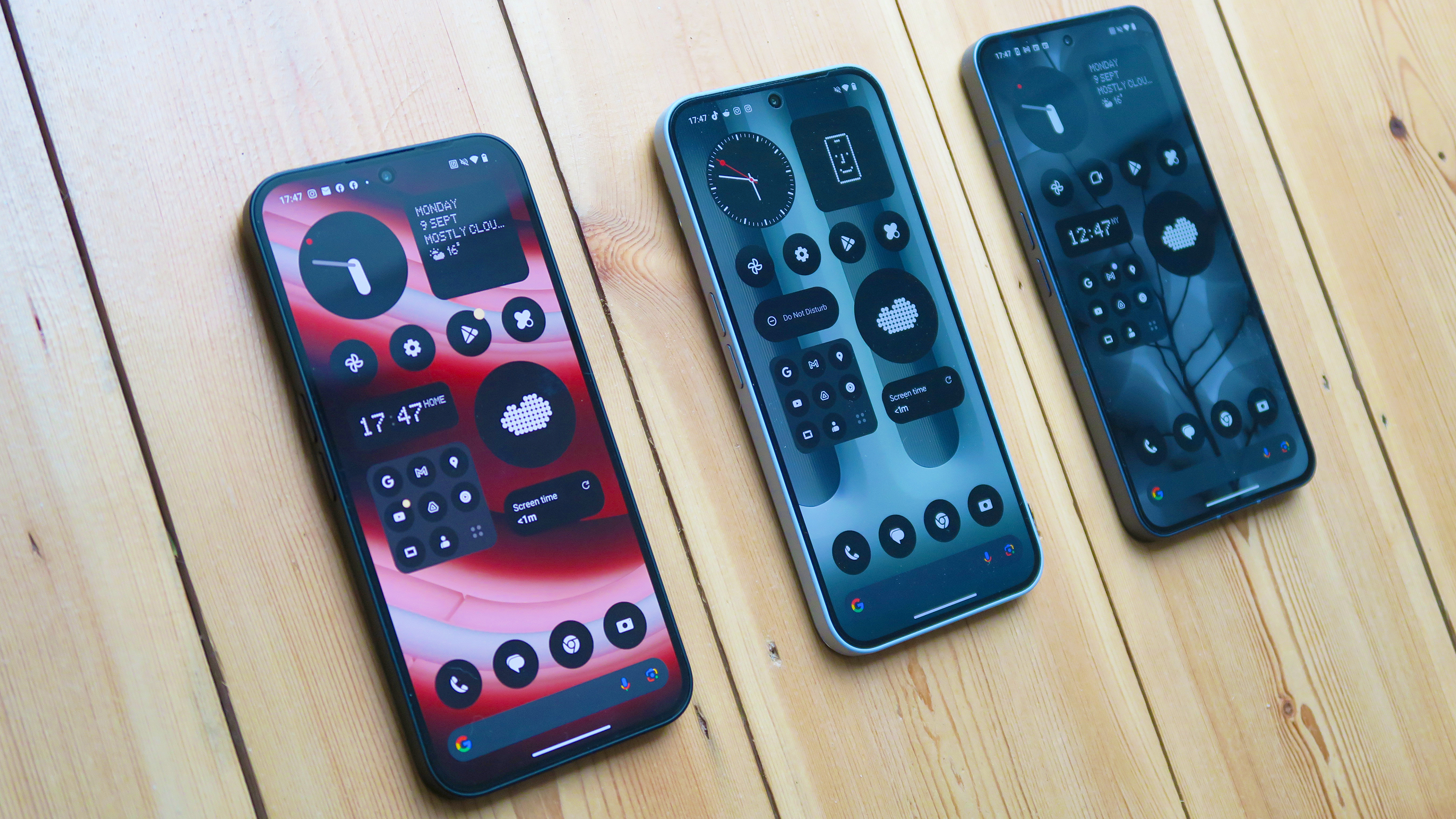
There's a lot to love about all three phones and right now, they're all solid buys for their respective price points, if you're after that unique Nothing experience.
The Nothing Phone 2 sports the most premium and hardest-wearing build, with a more intricate Glyph Interface, better performance and a faster, higher quality camera, plus wireless charging.
The Phone 2a is the weakest entrant but also the cheapest by a decent margin, and isn't that far behind the 2a Plus, despite the latter's superior performance and minor camera and battery enhancements.
It really comes down to time and money. If you can swing the high asking price of the Phone 2, it delivers a more robust experience overall, but falls short in terms of software support when compared to the Phone 2a and 2a Plus. If you want the cheapest, the Phone 2a has already dropped in price since launch and will continue to do so, while the Phone 2a Plus – despite being a little overpriced right now – will likely trend similarly to the base 2a in the near future. The Phone 2a Plus, then, is the best value proposition of the three phones, especially so considering that it also trumps the Phone 2 with that extra year of support.







